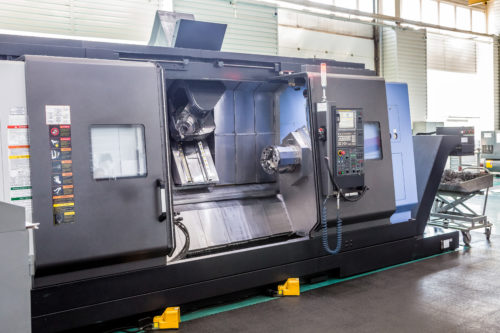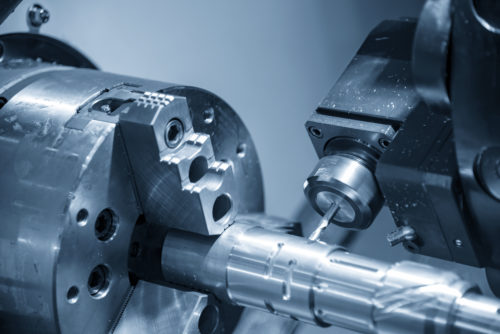A Guide to CNC Machines
Computer numeric control (CNC) machines are manufacturing units that utilize computer software to manage the motion and movement of the tools and/or workpiece during machining operations. Compared to manual machines, they can produce components with greater precision and accuracy at higher speeds since they need little to no human involvement to run once they are fully set up and programmed.
There are many types of CNC machines available, each of which can be used for different manufacturing purposes. The following guide provides an overview of the different types to help readers identify which one best suits their project. 
Computer numeric control (CNC) machines are manufacturing units that utilize computer software to manage the motion and movement of the tools and/or workpiece during machining operations. Compared to manual machines, they can produce components with greater precision and accuracy at higher speeds since they need little to no human involvement to run once they are fully set up and programmed.
There are many types of CNC machines available, each of which can be used for different manufacturing purposes. The following guide provides an overview of the different types to help readers identify which one best suits their project.
Horizontal & Vertical Mills
Milling machines use rotating cutting tools to remove material from stationary workpieces. They are available in two variations, based on configuration: horizontal mills and vertical mills.
Horizontal Mills
Horizontal mills have horizontally oriented machine spindles. They provide additional support and stability to the workpiece, making them better suited for larger and heavier pieces than vertical mills. Additionally, they use short and thick cutting tools, which enable them to produce heavier and deeper cuts. As a result, they are commonly utilized for the manufacture of components that require grooves or slots.
Vertical Mills
Vertical mills have vertically oriented machine spindles. They use long and thin cutting tools, which make them better suited for producing lighter and shallower cuts. As a result, they are commonly employed for die sinking applications.
There are two main types of vertical mills: turret milling machines and bed milling machines. Turret milling machines have a spindle and a table can that move perpendicular and parallel to the axis. Bed milling machines have tables that only move perpendicular to the axis. As a result of their broader freedom of motion, turret milling machines offer greater versatility than bed milling machines. They can be used for more milling operations, which is why they are often the smarter investment for manufacturers.
Boring Bars
Boring bars are tools utilized to alter the shape and/or size of existing holes in a workpiece by removing excess material from the inside. They can make the hole bigger, improve its accuracy, or enhance its surface roughness, depending on the final component specs. 
Boring operations can be performed by a variety of machines, such as drill presses, lathes, and mills. The boring bar is attached to the machine, which rotates and feeds it and/or the workpiece toward each other. Adjusting the dial screw of the bar moves the cutting bit(s) closer together or farther apart, allowing for the creation of narrower or wider cuts.
Machining Centers
Machining centers can accommodate a wide range of machine tools, which enables them to be used in many machining operations. Additionally, since they have a computerized automatic tool change function that automatically retrieves and exchanges tools for different operations, they help shorten changeover time, which saves manufacturers time and money.
These machines are primarily employed for the manufacture of dies for other manufacturing processes. However, they can also be used to create other parts and products.
CNC Lathes
Lathes are pieces of machining equipment utilized to shape a workpiece by rotating and pressing it against a single-point cutting tool. While manual lathes have been employed for hundreds of years to create various parts and products, the introduction of CNC lathes has significantly improved lathe operations. The machines allow for higher cutting accuracy and precision without sacrificing speed.
Trade Tech: Your CNC Machining Experts
The CNC machining process can be used to create a variety of components for different industries and applications. However, it is important to use the right machines and tools for the project. Otherwise, the components may not be produced successfully or cost-effectively. The machining experts at Trade Tech have the knowledge, skills, and tools needed to produce precision machined parts and products for nearly any customer project. If you want to partner with us for your CNC machining project, contact us or request a quote today.
